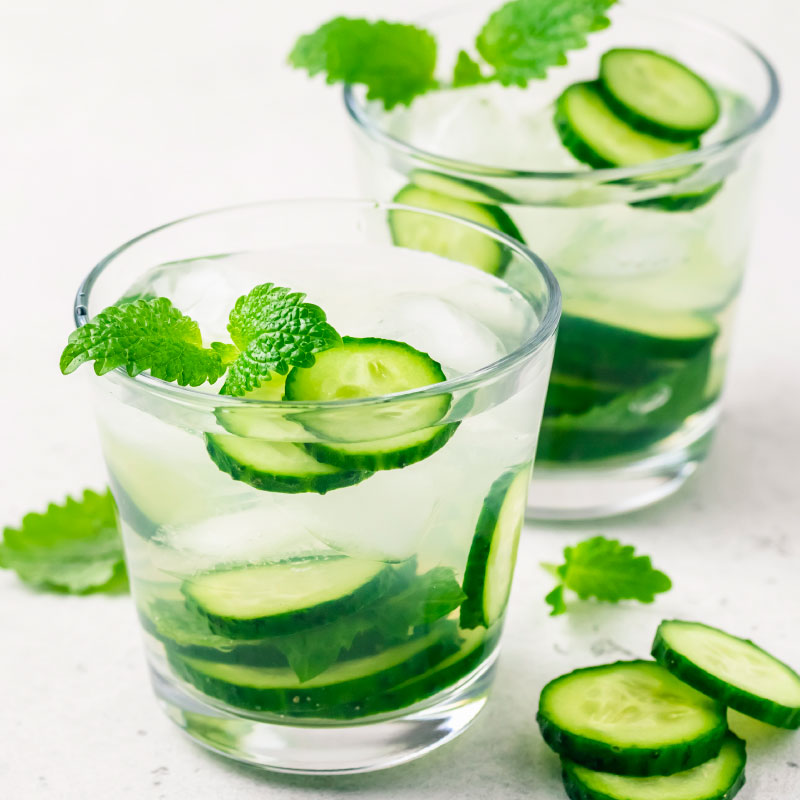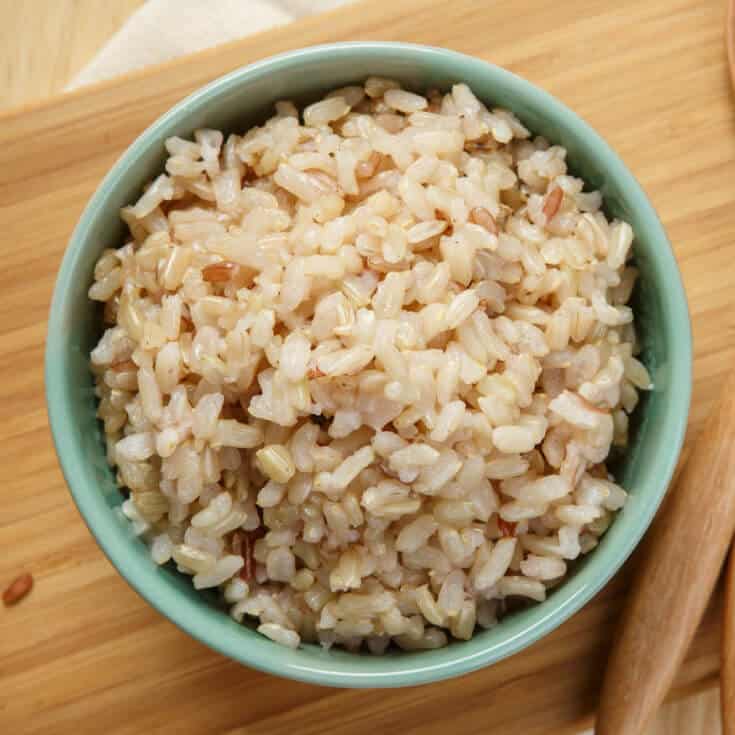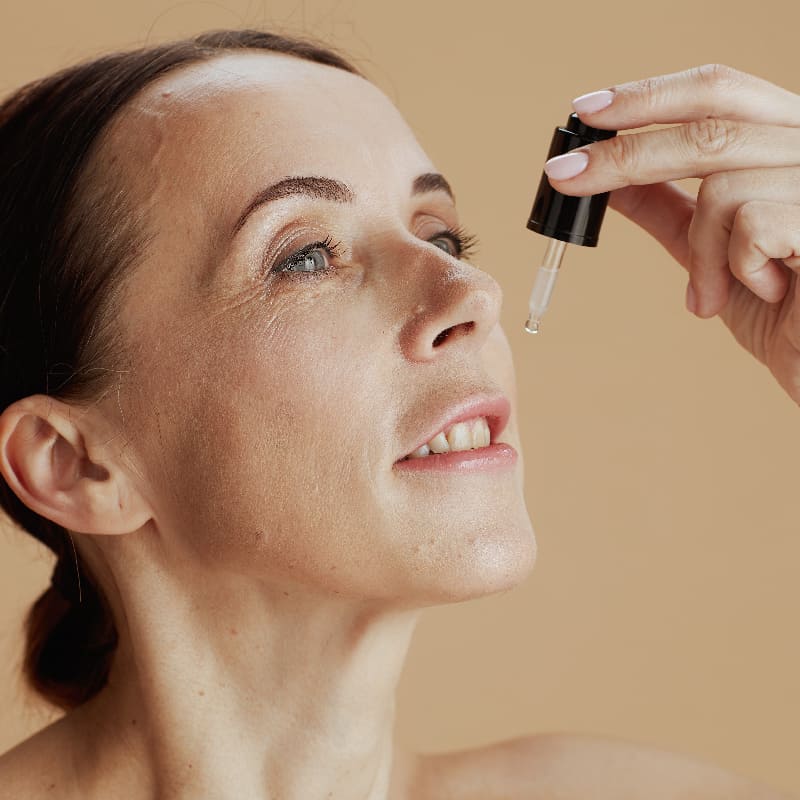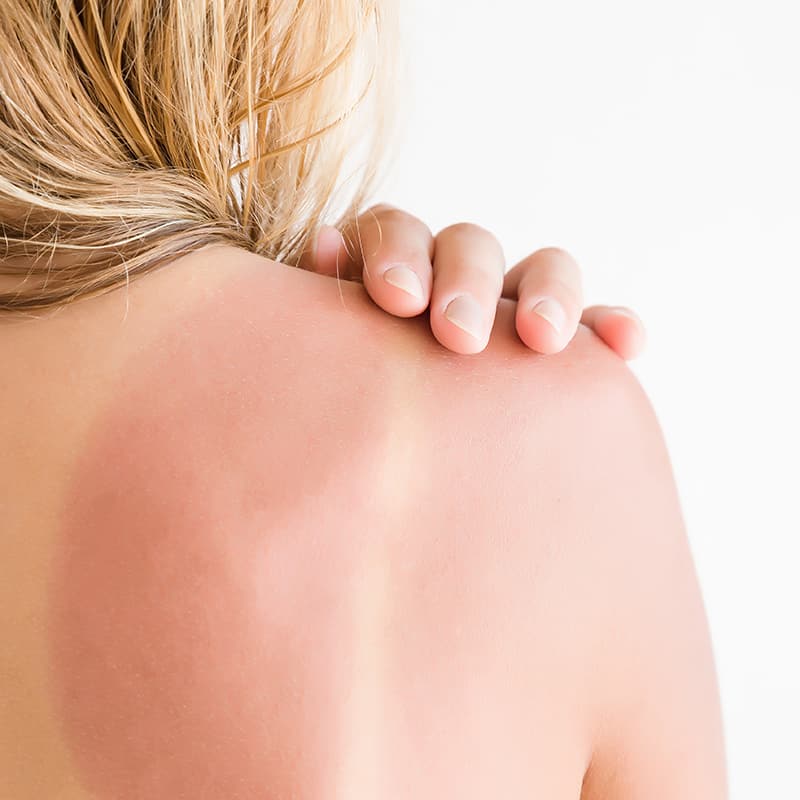This Dr. Axe content is medically reviewed or fact checked to ensure factually accurate information.
With strict editorial sourcing guidelines, we only link to academic research institutions, reputable media sites and, when research is available, medically peer-reviewed studies. Note that the numbers in parentheses (1, 2, etc.) are clickable links to these studies.
The information in our articles is NOT intended to replace a one-on-one relationship with a qualified health care professional and is not intended as medical advice.
This article is based on scientific evidence, written by experts and fact checked by our trained editorial staff. Note that the numbers in parentheses (1, 2, etc.) are clickable links to medically peer-reviewed studies.
Our team includes licensed nutritionists and dietitians, certified health education specialists, as well as certified strength and conditioning specialists, personal trainers and corrective exercise specialists. Our team aims to be not only thorough with its research, but also objective and unbiased.
The information in our articles is NOT intended to replace a one-on-one relationship with a qualified health care professional and is not intended as medical advice.
Sunburn Relief: 5+ Natural Treatments (Plus Symptoms & Risk Factors)
July 18, 2025
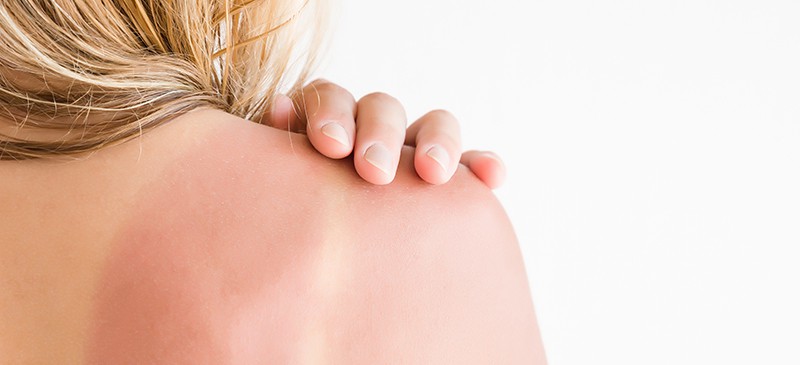
Ah summertime: trips to the beach, family cookouts, warm nights and … sunburn? Unfortunately, even if you’ve slathered on sunblock religiously, those UV rays can sneak through and leave you with a painful, itchy red burn that makes you yearn for sunburn relief.
While sensible sun exposure is essential for your health to prevent vitamin D deficiency, not to mention other amazing benefits of sunlight, too much of a good thing can lead to damaging sunburn or sun poisoning that could increase your risk of skin cancer and premature wrinkles.
If after a long summer day, you’ve spent too much time outdoors under the hot sun, thankfully there are many natural sunburn remedies that actually work.
How do you make a sunburn go away fast? If you’re wondering how to treat sunburn fast, you don’t have to go further than your kitchen cabinets with natural sunburn treatments like black tea and oatmeal.
Are you a fan of essential oils and keep them around your home? If the answer is “yes” then that’s great news since essential oils are another great form of natural sunburn treatment that provide sunburn relief.
What is a sunburn?
So what is a sunburn, anyway? A standard sunburn definition is inflammation of the skin caused by overexposure to ultraviolet radiation especially from sunlight.
How long does a sunburn last? Typically, it lasts several days.
A sunburn occurs when the sun or another ultraviolet light source hits your unexposed body and exceeds what your skin can handle. This prompts your skin to release melanin, its protective pigment.
Here are a few interesting facts:
- A fair-skinned person can get a sunburn in less than 15 minutes during intense midday sun.
- It could take hours for a dark-skinned person to get burned in that same type of sun exposure.
- Interestingly, the sunburn process starts setting in before it’s even visible to the naked eye. The first effects may not show up for several hours.
- Blisters related to sunburn could take hours to days to develop.
- It could take a full 24 hours for a sunburn’s full effects to surface.
Types of sunburn
Sunburn isn’t a one-size-fits-all condition. It can vary in severity based on skin type, sun exposure duration and UV intensity.
Understanding the types of sunburn can help guide treatment and prevent long-term damage.
- First-degree sunburn (mild): This is the most common type and affects only the outermost layer of skin (epidermis). It causes redness, warmth, tenderness and slight swelling. Skin may start to peel a few days after exposure. These burns usually heal within three to seven days without scarring.
- Second-degree sunburn (moderate to severe): Second-degree burns penetrate deeper into the skin, causing blistering, intense redness, pain and swelling. The skin may appear wet or shiny. These burns take longer to heal and carry a higher risk of infection and pigmentation changes.
- Sun poisoning (severe systemic reaction): Sun poisoning isn’t technically a third-degree burn, but it’s a term used for extreme sunburns that trigger flu-like symptoms, such as fever, chills, headache, dehydration, dizziness and nausea. This type requires immediate medical attention, especially if blisters are widespread or symptoms persist.
Symptoms
Sunburn symptoms include:
- Skin pinkness or redness
- Skin that feels warm or hot to the touch
- Pain and tenderness
- Sunburn itch
- Swelling and inflammation
- Small fluid-filled blisters, which may break
- Headache, fever, nausea and fatigue (if you have severe sunburn)
- Painful or “gritty” eyes
A sunburn rash or “sun rash” (hives and blisters on top of a sunburn), sunburn chills or fever, and nausea are all signs of sun poisoning.
Causes and risk factors
If you spend too much time in the sun without clothing or sunscreen to protect your skin, it can cause your skin to burn or tan.
What causes some people to burn while others are more likely to get a suntan? It depends upon the level of a pigment called melanin in the skin. People with fairer skin have less melanin while people with darker skin have more.
When the rays of the sun cause damage to the skin, the skin manufacturers more melanin in an effort to protect it from further damage. This causes skin tone to change color. For lighter-skinned individuals, the skin is more likely to turn red.
Do sunburns turn into a tan? Sometimes a sunburn will naturally turn into a tan if peeling can be avoided.
However, you should never allow a sunburn for the sake of hopefully getting a tan eventually because you are damaging your skin!
While anyone can get a sunburn, certain factors increase your risk and may lead to more severe reactions or long-term skin damage. Understanding these risk factors can help you take more proactive steps in prevention:
1. Fair skin and light features
People with fair skin, light-colored eyes, and blonde or red hair have less melanin, the pigment that provides some natural protection against UV rays. As a result, they tend to burn more quickly and severely.
2. High altitudes or equatorial regions
Sun intensity increases at higher altitudes and near the equator. UV radiation is stronger in these environments, making sunburn more likely, even with brief sun exposure.
3. Peak sun hours (10 a.m. to 4 p.m.)
UVB rays are strongest during midday. Spending time outdoors during these peak hours significantly raises your chances of getting burned. This includes people who work outdoors or athletes who play sports or exercise outside in the heat.
4. Reflection from water, sand, snow or concrete
Surfaces like water, snow, and light-colored sand or pavement reflect UV rays, intensifying sun exposure. This can lead to unexpected burns even in cooler weather or shaded areas near reflective surfaces.
5. Certain medications and topical products
Some drugs (including antibiotics, NSAIDs, acne treatments and diuretics) can make your skin more sensitive to sunlight. The same goes for some essential oils and exfoliating agents.
Always read labels, and ask your doctor about sun sensitivity if you’re unsure.
6. Tanning beds or intentional tanning
Artificial UV exposure from tanning beds or excessive sunbathing increases your risk of sunburn, premature skin aging and skin cancer. There is no such thing as a “safe tan” from UV rays.
7. Inadequate sun protection
Skipping sunscreen, wearing minimal clothing or failing to seek shade puts you at greater risk. Even quick errands or sitting by a window can result in sunburn if your skin is unprotected.
8. Age and skin condition
Babies and young children have more sensitive skin and burn more easily, while older adults may be less aware of how much sun they’re getting. Certain skin conditions can also heighten UV sensitivity, and having a history of sunburn can also make it more likely your skin will burn again.
Diagnosis and conventional treatment
For your doctor or dermatologist to diagnose a sunburn, he or she will likely examine your body and ask about your symptoms and history of sun exposure.
What is the best treatment for sunburn? According to the American Academy of Dermatology, many dermatologists will recommend conventional sunburn treatment that looks something like the following:
- Take cool baths or showers often to decrease pain. When drying off, leave a small amount of water on the skin, and then apply a moisturizer to help trap water in your skin and increase skin hydration. (This is a great natural sunburn remedy, too!)
- Aloe vera and soy are helpful ingredients to look for in a conventional sunburn cream.
- If you’re dealing with something worse than a mild sunburn or you’re experiencing discomfort, over-the-counter hydrocortisone cream is another conventional sunburn treatment.
- Use conventional pain relievers, such as aspirin or ibuprofen, to decrease sunburn swelling, redness and discomfort.
- Drink extra water to prevent dehydration. (Also makes the list of natural sunburn treatments for sure!)
- If your skin blisters, this means that you have a second-degree sunburn. Leave the blisters alone (in other words, do not pop or pick at them!) because they are helping your skin heal and guarding against infection.
Treating sunburn with even the best sunburn relief does not heal your skin, but it can help to improve pain, swelling and discomfort.
Natural remedies for sunburn relief
How do you make a sunburn go away fast? If your sunburn is not severe, using home remedies for sunburn relief promptly and consistently can really help to improve a burn fast.
Here are some ways you find that coveted natural sunburn relief:
1. Pantry and fridge staples (used topically)
If you’re trying to figure out how to heal sunburn naturally and find sunburn relief, you may be surprised to find out that many items in your kitchen can help when used topically. Here are some common food items that can help relieve sunburns:
- Oatmeal is proven to relieve itchy dry skin and reduce inflammation as burns heal. Enjoy its healing effects by blending dry oats in a blender or food processor until it’s finely ground and smooth. Add a cup of oatmeal to warm bath water (not hot!), and spend some quality time soaking.
- Milk can also help reduce skin pain and heat. You can either create a cold compress by dunking a washcloth in chilled milk and applying it directly to burnt areas or by adding about a cup of cold milk to a cool bath and soaking. Make sure it’s whole milk so you can benefit from the helpful natural fat content.
- Black tea isn’t just delicious to drink; it’s also great at reducing sunburn’s redness and quickening the recovery process. In a pitcher, soak a few bags of black tea. You want to do this until the water is super black. Then use a washcloth to apply it to the affected areas, and don’t rinse. The tannic acid in the tea, which gives it the dark color, eases the heat and provides much-needed sunburn relief.
- Yogurt contains probiotics and lactic acid, which make it an excellent choice for reducing redness and soothing the skin. Choose a full-fat, plain yogurt, and apply it gently on the sunburnt areas. Let it sit for about 10 minutes, and then wash off in the shower for sunburn relief.
- Cornstarch can reduce the painful chafing that occurs when your inflamed skin sticks to the bed sheets at night. While using it means you’ll be doing laundry the next day, sprinkling cornstarch over the sheets will reduce friction and create a barrier between your skin and the sheets, allowing for more comfortable sleep during sticky nights if your sunburn is exceptionally painful.
- Chamomile has natural anti-inflammatory and calming properties. Brew a few bags of chamomile tea, let the tea cool and soak a soft cloth in it. Gently press it against sunburned skin to relieve pain and redness.
- Both baking soda and colloidal oatmeal help balance skin pH and reduce itching and irritation. Add 1/2 cup of baking soda or colloidal oatmeal (or both) to a lukewarm bath and soak for 15-20 minutes. Pat your skin dry gently afterward. Do not rub.
2. Aloe vera and coconut oil
When you’re in the midst of your natural sunburn treatment, your body is desperate for moisture. Applying moisturizers like pure coconut oil and aloe vera gel can really help to improve a burn.
Coconut oil can provide sunburn relief by moisturizing and soothing the skin. Its natural fatty acids help reduce inflammation, ease discomfort and support the skin’s healing process.
Coconut oil also forms a protective barrier, which helps lock in moisture and prevent peeling. However, it’s best used after the initial heat and redness have subsided, typically 24-48 hours after the burn, so it doesn’t trap heat in the skin.
Aloe vera is so helpful that it’s a common conventional recommendation as well. It’s even sometimes called the “burn plant” because it’s such an effective natural remedy for a bad burn.
Aloe vera provides sunburn relief by cooling the skin, reducing inflammation and promoting healing. Its gel contains compounds like polysaccharides and antioxidants that help soothe irritation, rehydrate burned skin and support tissue repair. Aloe also has antimicrobial properties that can help prevent infection in damaged areas.
You can buy a bottle of pure aloe vera, or you can use a leaf of an aloe vera plant by splitting it open and applying the sap to your skin. Hint: Store a bottle of aloe or an aloe vera leaf in the refrigerator for an extra blast of soothing coolness upon application.
3. Hydrating foods
There are a lot of natural topical remedies for sunburns, but if you want to know how to get rid of sunburn fast, you don’t want to forget some internal help as well. It’s a great idea to “moisturize” from the inside out by eating foods with high water content.
Snack on fruits like oranges and watermelons, which are high in vitamin C and promote healing. In fact, watermelons are about 92 percent water and one of the top hydrating foods to eat for sunburn relief.
Also drink plenty of water and electrolyte-rich drinks like coconut water. While healing from sunburn, avoid alcohol and sugary foods, which can increase inflammation and slow down the sunburn relief process.
4. Apple cider vinegar
Did you know that you can use apple cider vinegar for sunburn relief? You might not smell great, but you’ll likely feel a whole lot better when you include apple cider vinegar in your sunburn-fighting routine.
Apple cider vinegar uses cover many health areas, including soothing burnt skin. It may provide sunburn relief by helping balance the skin’s pH, which can promote healing and reduce the stinging sensation.
Its acetic acid content has anti-inflammatory and antibacterial properties that may ease pain and lower the risk of infection. It’s best diluted with water before use to avoid further irritating the skin.
Add a cup to a cool bath along with ¼ cup of coconut oil and a few drops of lavender essential oil for a healing soak.
No time for a bath? You can also make a 1:1 solution of vinegar and water in a spray bottle, or dip a washcloth into the solution and dab on the affected areas.
5. Essential oils
Essential oils are not just for helping your home smell nice or easing stress and anxiety. There are also essential oils for sunburn relief, especially:
- Peppermint oil is a natural analgesic, or painkiller. It also helps soothe burnt areas by providing a cooling sensation. Bonus: Because peppermint oil is also effective at alleviating headaches, it can help with the after-sun headache some people suffer from.
- Lavender oil is another essential oil go-to for sunburn relief. It can help reduce the sting of burns and decrease redness. With its antioxidant, pain-relieving and anti-inflammatory properties, it’s the perfect choice to speed up healing, allowing your body to recover faster.
Are you wondering how to treat a sunburn with essential oils? This home remedy for sunburn incorporates both lavender and peppermint essential oils, along with aloe vera juice and coconut oil for sunburn relief.
In addition, it’s also a good idea to cover sunburned skin so it can heal. Loose, breathable fabrics like cotton or bamboo can protect sensitive skin from further irritation while allowing it to breathe. Avoid tight or rough clothing that can chafe burned areas.
Cooling the skin is another way to find some sunburn relief. Apply a cold, damp cloth to sunburned areas for 15-20 minutes at a time to reduce inflammation and discomfort. You can also take cool (not cold) baths or showers to help regulate body temperature and soothe the skin.
How to prevent sunburn
It’s possible to get a burn from the sun even when it’s cloudy or cool outside. It’s also important to note that UV light is stronger at high altitudes, and the sun’s rays are easily reflected onto the skin when you’re near sand, water or snow.
Key tips for avoiding a burn from sun exposure include:
- Aim to be in the shade if you’re going to spend extensive time outdoors, especially between the hours of 10 a.m. and 4 p.m. when the sun’s rays are at their strongest.
- Apply a natural sunscreen (ideally mineral sunscreen) to all exposed skin (and make sure your sunscreen isn’t expired).
- Put on additional sunscreen every 40 to 80 minutes or sooner if it has washed off from swimming or sweating.
- Wear breathable, light clothing and hats to protect skin.
- Wear sunglasses that block both UVA and UVB rays.
- Stay hydrated with non-alcoholic fluids, especially water.
- Don’t try to tan. Intentional tanning, whether by sunbathing or using tanning beds, damages the skin and increases the risk of sunburn and long-term effects like premature aging and skin cancer. There’s no such thing as a “safe tan” from UV exposure.
- Certain medications, like antibiotics (e.g., doxycycline), antihistamines and acne treatments (e.g., retinoids), can make your skin more sensitive to the sun. The same goes for some essential oils and cosmetics that contain citrus or alcohol-based ingredients. Always check labels and ask your doctor or pharmacist if you’re unsure.
Nutrients found in specific foods are also known to help prevent sunburns, often in a time-dependent manner, such as:
- Vitamin C and E: Vitamin C can be found in citrus fruits, peppers, guava and broccoli while many nuts like almonds and sunflower seeds are great sources of vitamin E.
- Beta-carotene: Foods like carrots, pumpkin and sweet potatoes are rich in beta-carotene.
- Lycopene: Delicious summer time foods like tomatoes and watermelon are high in lycopene.
- Fish oil: The sunburn response may be reduced by dietary fish oil rich in omega-3 fatty acids.
Frequently asked questions
What is the fastest way to get rid of sunburn?
The fastest way to get sunburn relief is to cool the skin with cold compresses or cool baths, apply soothing agents like aloe vera or chamomile tea, and keep the area moisturized. Hydrating from within and avoiding further sun exposure are also essential to speed healing.
How long does a sunburn last?
Mild sunburns typically heal within three to five days, while moderate to severe sunburns can take up to 10 days or more. Blistering burns may take even longer, and peeling often occurs during the healing process.
Should I put lotion on sunburn?
Yes, applying a gentle, fragrance-free moisturizer or aloe vera gel can help soothe and hydrate sunburned skin. Avoid petroleum-based products, which can trap heat, and choose products with ingredients like aloe, chamomile or calendula.
Is it bad if my sunburn peels?
Peeling is a normal part of the healing process for sunburn, especially with second-degree burns. However, avoid picking or peeling the skin manually, as this can lead to scarring or infection. Keep the skin moisturized to reduce dryness and irritation.
When should I see a doctor for a sunburn?
Seek medical attention if the sunburn is accompanied by severe blistering, fever, chills, confusion, dehydration or signs of infection, such as pus or increased redness. These may indicate sun poisoning or a more serious burn that requires professional care.
Can you get sunburned on a cloudy day?
Yes. Up to 80 percent of UV rays can penetrate through clouds, meaning you can still get a sunburn even on overcast days.
Always wear sunscreen when spending time outdoors, regardless of the weather.
Does sunburn increase your risk of skin cancer?
Yes. Frequent or severe sunburns, especially during childhood, can significantly increase your lifetime risk of developing skin cancers, including melanoma. Sun protection is crucial for long-term skin health.
How common is sunburn?
Sunburn is extremely common, particularly during warmer months or in sunny climates. In the U.S. alone, about one in three adults report getting sunburned each year, with higher rates among young adults and outdoor enthusiasts.
What does a bad sunburn look like?
A severe sunburn often includes deep redness, swelling, blistering and intense pain. The skin may feel hot to the touch and may peel within a few days.
In extreme cases, symptoms like fever, chills or nausea can occur, which are signs of sun poisoning.
What are the three stages of sunburn?
- Stage 1 (initial burn): Redness, heat and discomfort appear within a few hours of sun exposure.
- Stage 2 (inflammation and blistering): Pain peaks within 24-48 hours. Swelling and blisters may develop.
- Stage 3 (peeling and healing): The skin begins to peel and regenerate, often three to five days after the burn.
Are there long-term effects from sunburn?
Yes. Repeated sunburns can lead to premature aging, sunspots, pigmentation changes and a significantly increased risk of skin cancers. UV damage is cumulative, meaning each sunburn adds to your lifetime risk.
Final thoughts
- According to the Centers for Disease Control and Prevention, you should seek medical attention for a bad sunburn with sunburn blisters that cover over 15 percent of your body, you have a high fever, experience dehydration and/or you feel extreme pain for longer than 48 hours.
- Of course, it’s always best to avoid sunburns in the first place. However, it’s not ideal to completely bar yourself from the sun. Usually a few minutes is all someone needs to get sufficient vitamin D (and you can always supplement if you need more).
- The best treatment for sunburn is both natural and effective. In the event you do spend too much time in the sun and you’re in need of relief, you likely have many natural remedies around your home, including milk, yogurt, apple cider vinegar and hydrating foods like watermelon.
- You can even eat a diet rich in lycopene (think tomatoes) and omega-3s (opt for wild-caught Alaskan salmon and sardines) to help prime your body to help naturally prevent sunburns to a certain extent.
- And don’t forget about essential oils, which are another awesome home remedy for sunburns.
- While no one enjoys them, finding natural relief for sunburns can make the experience much more bearable and boost skin health in the process.





